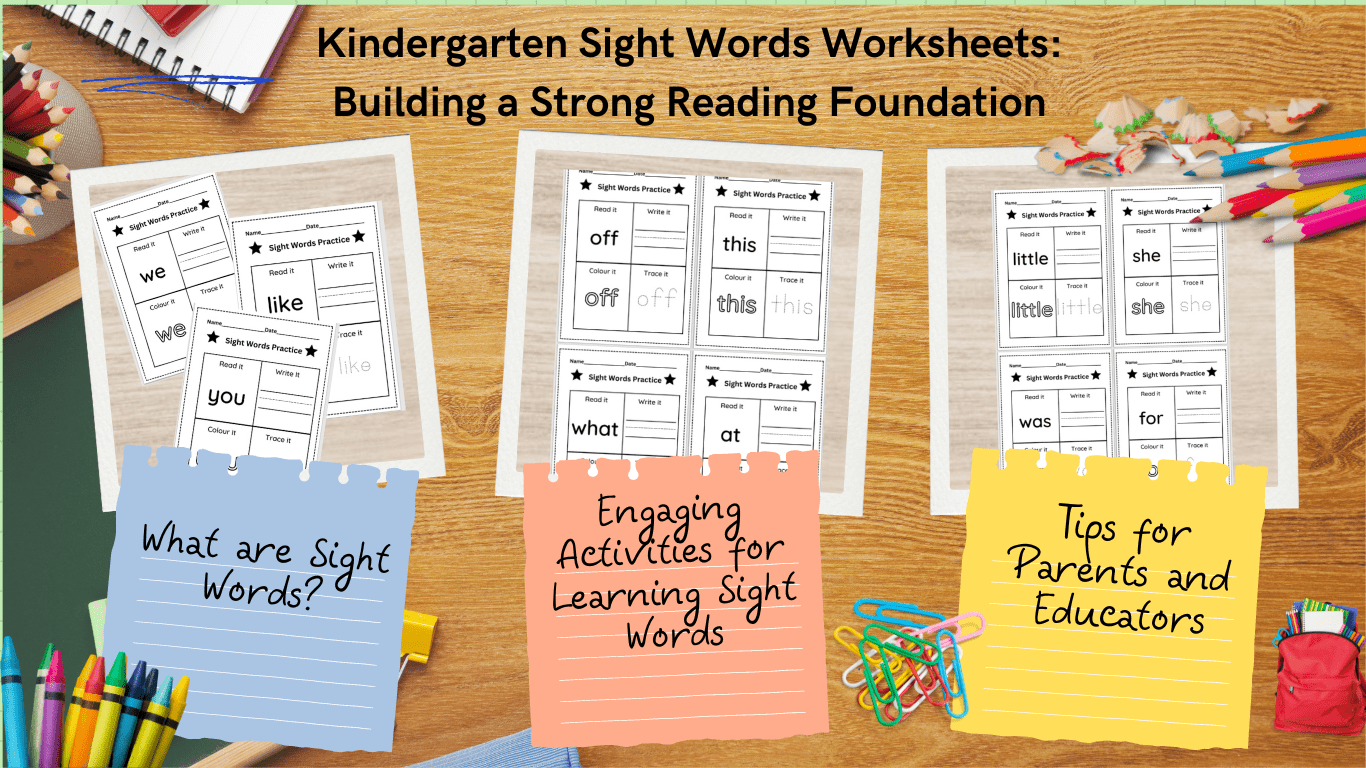Kindergarten Sight Words Worksheets: Building a Strong Reading Foundation
Are you a parent or educator seeking effective ways to help kindergarteners develop their reading skills? Look no further! Kindergarten sight words worksheets are a valuable resource to enhance early reading abilities and foster a strong foundation for future literacy success. In this comprehensive guide, we’ll delve into the world of sight words, their significance in early education, and how to utilize specially crafted worksheets to make learning engaging and efficient.
Introduction
As children embark on their educational journey, equipping them with fundamental reading skills lays the groundwork for a successful academic career. Kindergarten sight words worksheets offer an interactive and engaging approach to teaching these essential words that don’t always follow conventional phonetic patterns.
What are Sight Words?
Sight words, often referred to as high-frequency words, are words that appear frequently in written texts and do not adhere to standard phonetic rules. These words encompass a significant portion of the language children encounter while reading, which is why their recognition plays a pivotal role in developing reading fluency.
Why are Sight Words Important in Kindergarten?
Early literacy development hinges on a strong grasp of sight words. These words constitute a substantial portion of the text in children’s books and materials. By memorizing and recognizing sight words, kindergarteners can read more effortlessly and focus on comprehension.
Designing Effective Sight Words Worksheets
Creating well-structured sight words worksheets is crucial for capturing children’s attention and promoting effective learning. Each worksheet should introduce a few sight words, encourage reading practice, and incorporate activities that reinforce word recognition.
Engaging Activities for Learning Sight Words
Engagement is key to successful learning. Incorporate hands-on activities like scavenger hunts, word-building games, and interactive flashcards to transform mundane learning into an exciting adventure.
Incorporating Technology: Interactive Sight Words Learning
In the digital age, technology can enhance learning experiences. Explore interactive apps and online platforms that gamify sight words learning, making it enjoyable and effective.
Tracking Progress and Celebrating Achievements
Keep track of a child’s progress by maintaining a list of mastered sight words. Celebrate milestones to boost confidence and motivation for continued learning.
Tips for Parents and Educators
Whether at home or in the classroom, fostering sight words proficiency requires patience and creativity. Tailor your approach to the child’s learning style and interests.
Common Challenges and How to Overcome Them
Encountering difficulties is natural. Address common challenges such as memorization hurdles or lack of engagement with innovative strategies and personalized attention.
The Power of Consistency and Practice
Consistent practice is key to retaining sight words. Short, frequent practice sessions are more effective than sporadic long sessions.
Sight Words and Fluency: The Connection
Sight words mastery contributes to overall reading fluency. The more effortlessly children recognize these words, the more focus they can dedicate to understanding the context.
Boosting Confidence Through Sight Words Mastery
Mastering sight words boosts a child’s confidence and motivation to tackle more complex reading materials, setting the stage for lifelong learning.
Making Learning Fun: Creative Sight Words Games
Incorporate creativity by designing games like sight words bingo, word races, and storytelling using sight words. These activities make learning entertaining and effective.
Inclusivity in Sight Words Education
Adapt your teaching methods to accommodate diverse learners, including those with learning disabilities or English as a second language, ensuring equal opportunities for all.
The Future of Kindergarten Literacy Education
The world of education is ever-evolving. Embrace new teaching techniques, tools, and methodologies to continue enhancing kindergarten literacy education.
Conclusion
Kindergarten sight words worksheets pave the way for young learners to build a solid foundation in reading. By infusing creativity, engagement, and consistency into the learning process, parents and educators can empower children to become confident and proficient readers.
FAQs
Q1: How can I make sight words learning engaging for my child?
A: Incorporate games, interactive activities, and technology to make learning fun and exciting.
Q2: Are sight words the same for every language?
A: No, sight words vary across languages, as they are based on frequently used words in a specific language.
Q3: What’s the ideal duration for sight words practice each day?
A: Aim for short, focused practice sessions of around 10-15 minutes daily for optimal retention.
Q4: My child is struggling with certain sight words. What can I do?
A: Break down challenging words into smaller parts, use visual aids, and repeat practice to help your child overcome difficulties.
Q5: How can educators accommodate diverse learners in sight words teaching?
A: Provide individualized support, utilize multi-sensory approaches, and offer alternative strategies for different learning styles.
